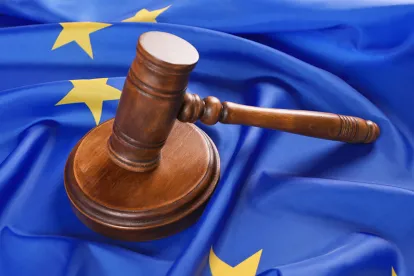On 25 February 2023, the EU Council adopted the tenth package of restrictive measures in response to Russia’s ongoing aggression against Ukraine.
The new regulations include tighter restrictions on the export of dual-use goods, as well as measures against entities that support the conflict or deliver drones used by Russia. According to a statement by the European Commission, the new restrictions apply to exports to the EU totaling approximately €11.4 billion. Through this package, almost half of the EU exports to Russia are restricted.
The following is a brief summary of the package, focusing mainly on individual sanctions (targeting natural persons and entities) as well as import and export controls.
Additional Listings
The Council has imposed asset freeze-type sanctions on 87 individuals and 34 entities.
Among these new designations, notable individuals considered to be key decision-makers in Russia’s military aggression, such as new members of the Russian Federation Council, several Russian government officials and a few deputies of the State Dum, have been added to the EU Sanctions List.
Within the Russian military and defense sectors, Russian military leaders, companies manufacturing missiles, drones, aircraft, military vehicles, warships or control systems, and suppliers to the Russian armed forces also are sanctioned.
Further, four Iranian individuals involved in the development and supply of drones used by Russia against Ukraine also are sanctioned.
Finally, economic actors in sectors that provide substantial revenue or financial support to the Russian government also have been included in the EU Sanctions List. These include banks such as Alfa-Bank, Rosbank and Tinkoff Bank, the National Wealth Fund of the Russian Federation (which the Russian authorities allegedly plan to use to compensate the budget deficit in 2023-2024) and the Russian National Reinsurance Company (owned by the Russian Central Bank).
Altogether, EU restrictive measures now apply to a total of 1473 individuals and 205 entities.
Import-Export Control and Restrictions
The 10th sanctions package includes bans on the export of critical technology and industrial goods, such as electronics, specialized vehicles, machine parts, spare parts for trucks and jet engines, along with goods for the construction sector that can be used by the Russian military, such as antennas or cranes.
The list of restricted items with the capacity to technologically enhance Russia’s defense and security sectors will include an additional set of electronic components used in Russian battlefield-recovered weapons systems, such as drones, missiles and helicopters, as well as specific rare earth materials, electronic integrated circuits and thermal imagers.
Dual-use goods also are targeted, expanding the list of entities directly supporting Russia’s military-industrial complex in its aggressive action by 96 additional entities and imposing stricter export restrictions on them.
For the first time, this list will include seven Iranian entities manufacturing unmanned military aerial vehicles.
Additionally, the new regulations introduce a ban on the transit through Russia of dual-use goods and technology exported from the EU.
Finally, new restrictions are imposed on imports of goods such as asphalt and synthetic rubber.
Other Sanctions
-
Prohibition against providing gas storage capacity (with the exclusion of the part of liquefied natural gas (LNG) facilities) to Russian nationals and legal aliens.
-
Suspension of broadcasting licenses for RT Arabic and Sputnik Arabic.
-
Restrictions for Russian nationals to hold any position in the governing bodies of EU critical infrastructures and entities.
-
Reporting obligations to the member states and the European Commission on immobilized reserves and assets of the Central Bank of Russia to ensure the effectiveness of the asset freeze prohibitions.
-
Obligation of aircraft operators to advise their national aeronautic authorities of unscheduled flights.



 />i
/>i
